mobile View, to the German Version tap the flag


- Republic of Burkina Faso
- authoritarian presidial republic under military reign
- own name: République de Burkina Faso
- former name: Upper Volta
• Flags
• Historical Flags
• Meaning/Origin of the Flag
• Coat of Arms
• Meaning/Origin of the Coat of Arms
• Aircraft Roundel
• Map
• Numbers and Facts
• History
• Origin of the Country's Name
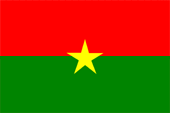
National flag,
ratio = 2:3,
Source, by: Wikipedia (D)





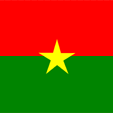
Flag of the President,
ratio = 1:1,
Source, by: Flags of the World




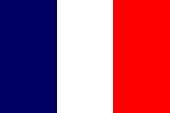
1895–1959,
Flag of France,
ratio = 2:3,
Source, by: World Statesmen





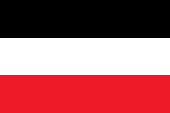
1959–1984,
National flag,
ratio = 2:3,
Source, by:
Die Welt der Flaggen,
Flags of the World



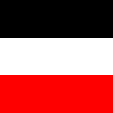
1959–1984,
Flag of the President,
ratio = 1:1,
Source, by: Flags of the World




The flag of Upper Volta was introduced on the 9th of December in 1959, and undertoken for the independent Upper Volta. It showed three horizontal stripes in black, white and red. The three colors stood for the three arms of the river Volta (Red Volta, White Volta and Black Volta). After the Sankara-revolt (4th of August in 1983) Upper Volta was renamed in Burkina Faso exactly one year later, and the hitherto valid flag abolished as an alleged neo-colonialist symbol. The new flag was so introduced on the 4th of August in 1984. It shows the pan-african colors, two horizontal stripes in red and green with a yellow star in the middle. The star should symbolize the revolutionar character of the new rulers. Green stands for the fertility of the land, and red for the in the fight of independence shed blood. The combination of the colours green, yellow and red are the pan-african colours: Perhaps in 1900 was the beginning of the Panafrica-Movement, wich wants to emphasize the commons of all people with black skin. For the political unity of Africa stands the colour-triad green-yellow-red, wich used many african countries in their flags after the independence. The first country was Ghana in 1957. As the origin apply the colours of Ethiopia (Abessinia), the oldest independent state in Africa.
Source: Die Welt der Flaggen


since 1997
Coat of arms of Burkina Faso,
Source: Wikipedia (D)
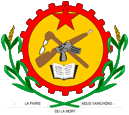
1984–1997,
Coat of arms of Burkina Faso,
Source:
Corel Draw 4,
Wikipedia (D)

1958-1984,
Coat of arms of Upper Volta,
Source: Wikipedia (FR)
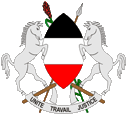
Coat of arms of Upper Volta,
unbekannte Version

On 4th of May in 1961 the national coat of arms of the former autonomous republic from 1958 was officially adopted. It contained in a blue shield, thereupon in the middle a smaller shield (heart shield) in the colors of the country, with the golden initials of the land thereupon (RHV – République de Haute-Volta). To the left and on the right of the heart shield ever one white horse as shield holder, underneath sorgho plants and two hoes. Behind the heart shield two crossed spears, and above that the motto of the state in a motto ribbon: "Unité, Travail, Justice" => "unity, work, justice". In consequence of the Sankara-coup (4th of August in 1983) one year later not only the country was renamed and introduced a new flag, but it was also adopted a new marxist coat of arms. It showed a red gear with a yellow background, in it a hoe crossed with a machine gun (Kalashnikov), an opened book and above a red star. Left and right the coat of arms was surrounded by sorghum plants; below a banner with the new national motto: "La Patrie ou la Mort, nous vaincrons" => "fatherland or death, we win". In 1997 was introduced a new, civic coat of arms, which remebers the traditions of the first coat of arms of Upper Volta: The sorghum plants now appear far left and far right, below the heartshield with the motive of the flag appeares an opened book. Two spears cross behind the shield. Hoes appear in the coat of arms no longer. The banner over the central shield carrys the name of the country in an unusual style: "Burchina Faso". Below the shield a banner with the new state motto: "Unité, Progress, Justice" => "Unity, Progress, Justice".
Source:
Flaggen und Wappen der Welt,
Wikipedia (D)

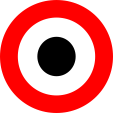
to 1984,
Aircraft Roundel,
Source, by: Wikipedia (EN)
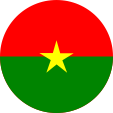
since 1984,
Aircraft Roundel,
Source, by: Wikipedia (EN)

Location:
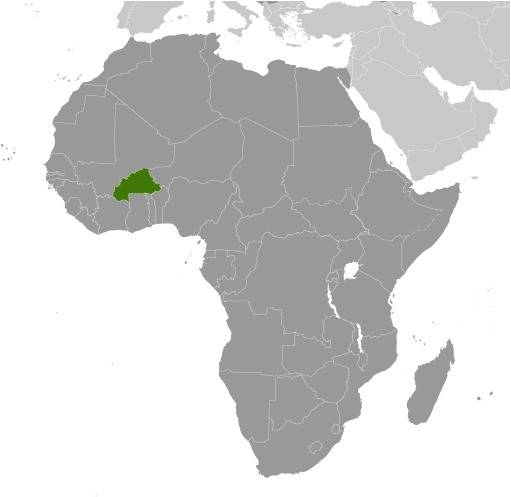
Source: CIA World Factbook
Map of the country:
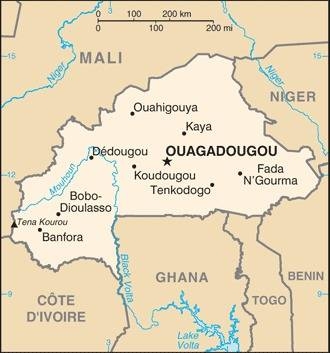
Source: CIA World Factbook

Area: 103.456 square miles
Inhabitants: 20.107.509 (2017), thereof 40% Mossi, 14% Bobo, 9% Senufo, 8% Gurma, 7% Tuareg, 6% Lobi, 5% Fulbe
Religions: 60% Muslim, 23% Christian, 15% Animist
Density of Population: 194 inh./sq.mi.
Capital: Ouagadougou, 2.388.700 inh. (2017)
official Language: French
other Languages: 68 different languages
Currency: CFA-Franc BCEAO (FCFA, F, XOF) = 100 Centimes, FCFA = "Franc de la Communauté Financière d’Afrique"
Time Zone: GMT
Source: Wikipedia (D)

1450–1896 · Mossi State
1896 · conquest by France
1919 · establishment of the Upper Volta colony
1958 · Autonomous Republic of Upper Volta
5th of August in 1960 · France grants independence
4th of January in 1966 · Lamizana-revolt
4th of August in 1983 · Sankara-revolt
4th of August in 1984 · renamed in Burkina Faso
1987 · Compaoré-revolt
1991 · new constitution, Compaoré becomes president
Source:
Atlas zur Geschichte,
Wikipedia (D),
World Statesmen

The name "Upper Volta" was given to the land of the colonial power France (Haute Volta), It indicates that the country is located on the upper reaches of the River Volta. The name Volta goes back to the Portuguese. It means translated "Return", "curve" or "curvature", and has its origin in the many windings of the river. The name "Upper Volta" is bilingual. "Burkina" means in the Mòoré language "honorable person", "Faso" means in the Dioula language, "father's house" what means "fatherland". The country's name is translated: "Homeland of the Honourable". However, there are other translations: "Land of honorable People", "Land of the Upright", "Land of the Incorruptible", "Land of People with head up". There are also different spellings: eg "Burkina Fasso", in the coat of arms is the country name "Burchina Faso".
Source:
Wikipedia (D),
Handbuch der geographischen Namen,
Volker Preuss


![]()


























